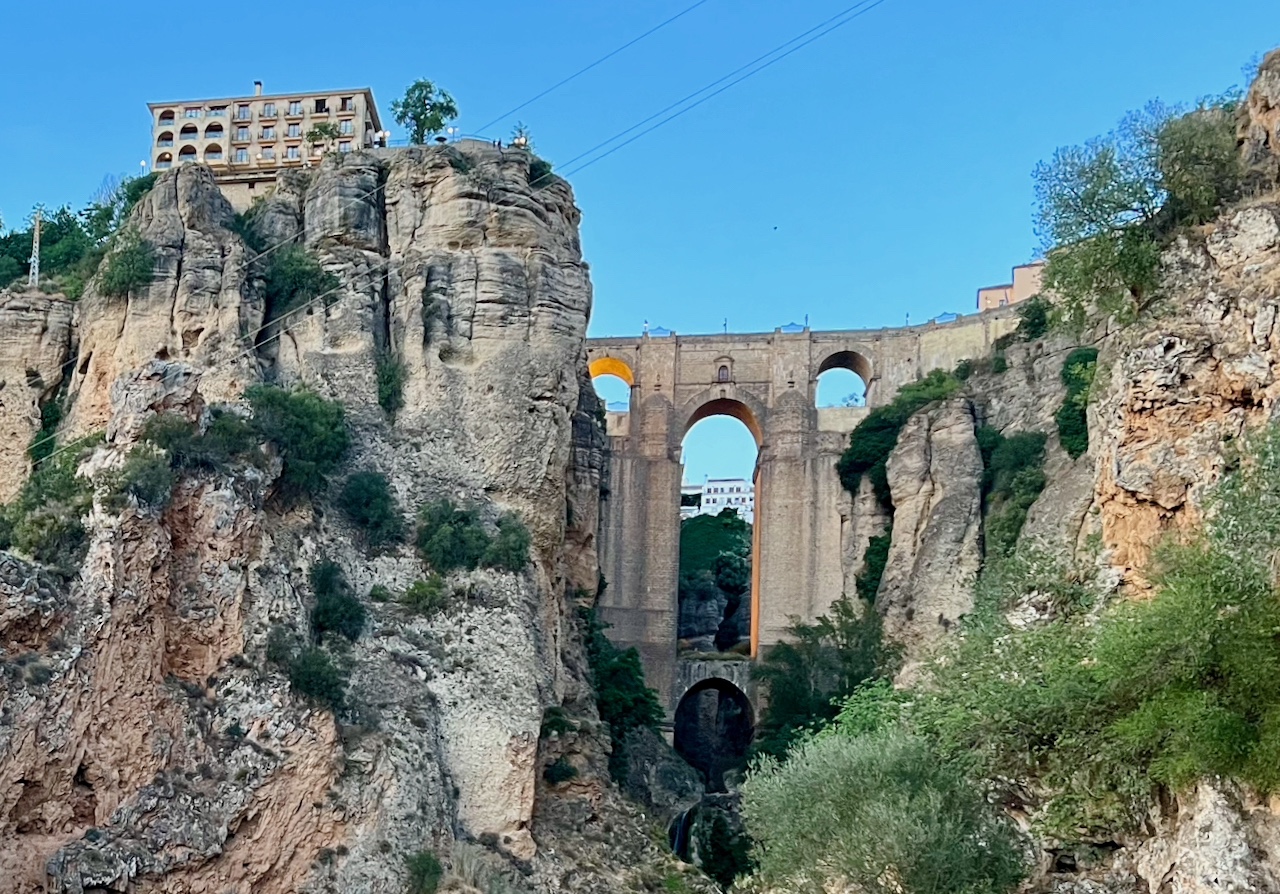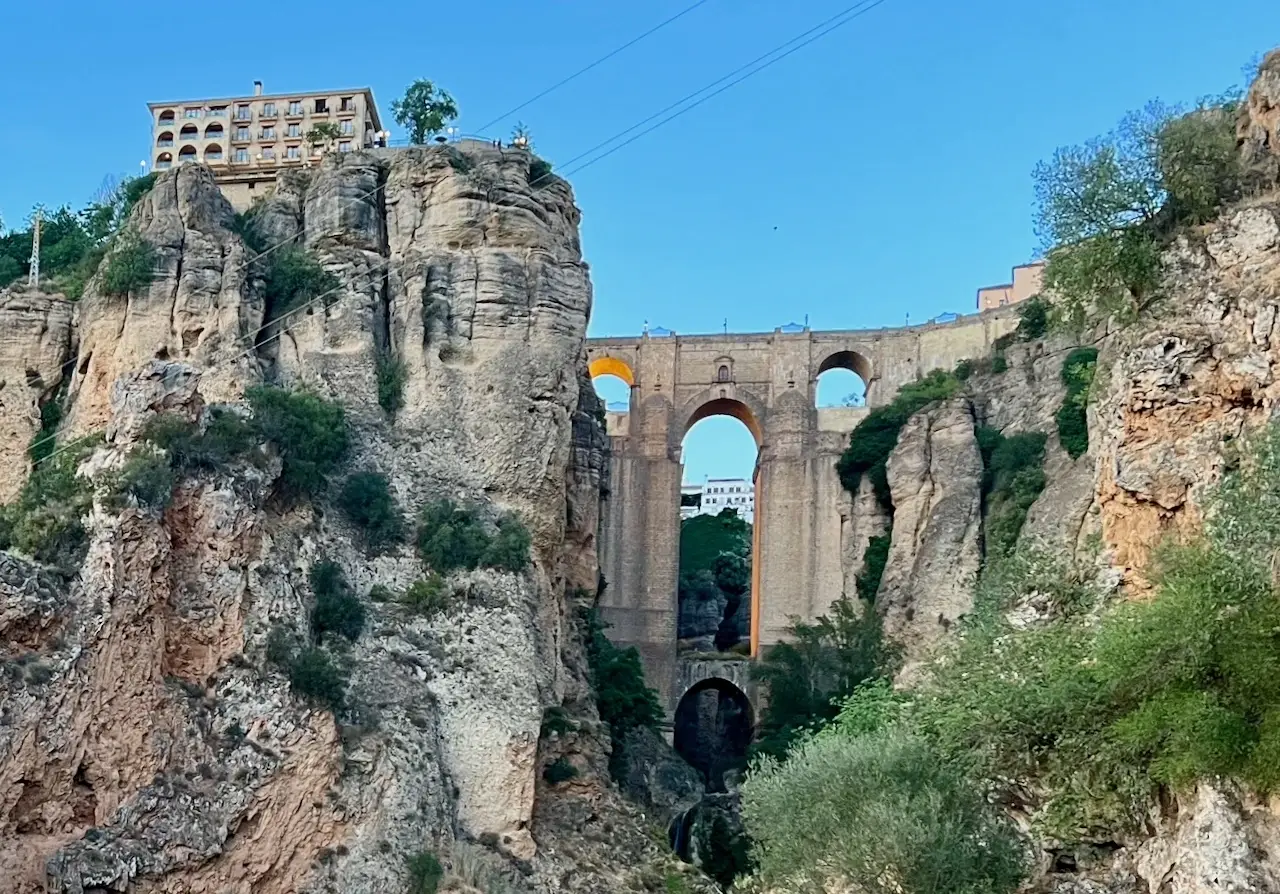Are you wondering whether to stay at Paradores in Spain vs. Hotels?
I asked that same question when we first started traveling to Spain in the early 90s. I bought a book on Paradores in Spain and contacted several Paradores directly for our stays throughout Spain. We love staying at them and visiting them for afternoon cocktails or usually spectacular authentic meals. This easy guide explains why you should stay at a parador as well as a full list of options across Spain.
Did you know that [most] Paradores in Spain are luxury hotels?
Inaugurated in 1928 by the monarch himself, the Parador de Gredos in Ávila marked the beginning of a remarkable journey for Spain’s paradores. Fast forward to today, and travelers can choose from over 90 paradores sprinkled across the country, each offering a stay ranging from 3 to 5 stars in quality.
The ethos driving the creation of these paradores was to make extraordinary historical estates accessible to travelers, with the dual purpose of preserving these architectural gems. The revenue generated by these hotel-like paradores is reinvested in maintaining and safeguarding these magnificent structures for future generations to admire and enjoy.

Spain’s paradores are where history and luxury intertwine to create an unforgettable travel experience! In this short piece, we’ll embark on a journey through the heart of Spain, exploring these unique accommodations that blend the charm of a hotel with the cultural richness of a Parador. From the cliff-perched Parador de Ronda (one of my favorites!) in Andalusia to the regal Parador de Santiago de Compostela in Galicia, each Parador tells a story, often housed in meticulously restored castles, monasteries, or fortresses.
Discovering Paradores in Spain: A Blend of Luxury and History
Historical Significance: Paradores, or Paradores de Turismo, are a network of state-owned hotels in Spain, renowned for their historical significance. Many are set in converted castles, palaces, fortresses, convents, and monasteries. This initiative, which began in 1928, aimed to promote tourism while preserving the nation’s rich historical and cultural heritage. For example, the Parador de Granada, set in a 15th-century convent, offers an intimate view of the Alhambra’s storied past.
Architectural Marvels: Each Parador is a testament to Spain’s diverse architectural legacy. The Gothic grandeur of the Parador de Alcalá de Henares contrasts with the Moorish influences in the Parador de Córdoba. These paradores not only provide luxury accommodation but also serve as living museums, showcasing styles ranging from Romanesque to Modernism.
Luxury Scale: Paradores offer a range of luxury experiences, from cozy, traditional rooms to lavish suites. They often feature modern amenities, gourmet dining experiences, and breathtaking views. The Parador de Alarcón, for example, provides a luxurious retreat with its boutique rooms, each uniquely decorated to reflect the castle’s medieval charm.
Cultural Immersion: Staying in a Parador in Spain is like stepping into a different era of Spanish history. Guests can enjoy traditional Spanish cuisine, often made with local ingredients, and participate in cultural activities unique to each region. The Parador de Santiago de Compostela, located in a 12th-century hospital, immerses guests in the rich culture of Galicia.

Traveler’s Guide: Navigating Paradores in Spain
Iconic Locations: Spain’s paradores are strategically located in some of the country’s most picturesque settings. The Parador de Ronda (shown above) is perched on a cliff overlooking a deep gorge and offers spectacular views of the Andalusian landscape. Meanwhile, the Parador de Leon, housed in a 16th-century monastery, is a stone’s throw away from the city’s historic sites.
Accessibility and Connectivity: Most paradores are accessible by car, and some are conveniently located near train or bus stations. For instance, the Parador de Toledo is just a short drive from Madrid, offering an easy getaway to the historic city of Toledo.
Most Popular Paradores in Spain
As mentioned, there are nearly 100 of them! Here are the ten most popular paradores in Spain where you can book your next trip! You can download the whole list of Paradores in Spain here as my gift to you! And here’s someone’s fabulous Google map!
- Parador de Granada, Andalusia: Set within the Alhambra Palace complex, this parador is a former monastery with stunning Moorish architecture and views of the Generalife gardens.
- Parador de Santiago de Compostela, Galicia: Known as the Hostal dos Reis Católicos, this is one of the oldest hotels in the world, located in a 15th-century hospital building next to Santiago Cathedral.
- Parador de Alcalá de Henares, Madrid: Located in a 17th-century monastery school in the UNESCO World Heritage city of Alcalá de Henares, birthplace of Cervantes.
- Parador de Ronda, Andalusia: Perched on the edge of the famous Tajo Gorge, offering spectacular views of the Andalusian landscape.
- Parador de Toledo, Castilla-La Mancha: Set on a hill, it provides a panoramic view of the historic city of Toledo and its famous river.
- Parador de Córdoba, Andalusia: Built on the ruins of the summer palace of Abd-ar-Rahman I, this parador offers views of the Sierra and the city.
- Parador de Úbeda, Andalusia: Located in a 16th-century Renaissance palace in the heart of the UNESCO-listed town of Úbeda.
- Parador de Segovia, Castilla y León: Offers a modern contrast to the ancient city, with exceptional views of the historic cityscape including the Roman aqueduct.
- Parador de Alarcón, Castilla-La Mancha: Housed in a Moorish castle dating back to the 8th century, overlooking the Júcar River.
- Parador de León, Castilla y León: Hosted in the 16th-century San Marcos Monastery, this is one of the great architectural jewels of the city, with a facade rich in history.
Each of these paradores offers a unique glimpse into Spain’s rich historical tapestry, blending luxury accommodation with cultural immersion.
Pricing and Planning Your Stays
General Pricing: Prices for paradores in Spain vary depending on location, room type, and season. On average, you can expect to pay anywhere from $150 to $400 per night. Some paradores, like the Parador de Ávila, (usually under $100 USD) offer more affordable options without compromising on the historical experience.
Booking Tips: To get the best deal, book in advance, especially during peak tourist seasons. Look for special offers on the Paradores website, and consider traveling in the off-season for lower rates. Also, joining the Amigos de Paradores program can offer discounts and exclusive benefits.
FAQs about Paradores in Spain
1. What exactly is a Parador, and how is it different from a regular hotel?
A parador is a type of luxury accommodation in Spain, often located in a historically or culturally significant building like a castle, palace, or monastery. Unlike regular hotels, paradores are known for their rich historical heritage, unique architectural features, and their role in preserving Spanish culture and history. They often offer a more intimate and culturally immersive experience compared to standard hotels.
2. What is the best time of year to visit Paradores?
The best time to visit paradores in Spain largely depends on the region and your personal preferences. Generally, spring (April to June) and fall (September to November) are ideal for comfortable weather and fewer crowds. However, visiting in the summer or winter can offer unique experiences, such as enjoying the beaches near coastal Paradores or the cozy ambiance of a mountain parador in winter.
3. Are Paradores in Spain suitable for families with children?
Absolutely! We stayed at our first parador with our young children in the 90s and it was a fantastic experience. Many paradores in Spain are family-friendly and offer amenities and accommodations suitable for guests of all ages. Some Paradores even provide special activities, spacious family rooms, and menus tailored for younger guests. It’s always a good idea to check with individual paradores for specific family services and facilities available.
Summary — Paradores in Spain: A Journey Through History and Luxury
Paradores in Spain are not just hotels—they’re living pieces of history, blending luxury, culture, and heritage. From castles and monasteries to palaces and fortresses, each Parador offers a unique glimpse into Spain’s rich past while delivering modern comforts. With over 90 locations across the country, these extraordinary accommodations invite you to indulge in local cuisine, admire stunning architecture, and immerse yourself in the diverse beauty of Spain’s regions. Whether you’re exploring ancient cities or relaxing in tranquil countryside settings, a stay at a Parador transforms your journey into an unforgettable experience.
You might also enjoy reading:






